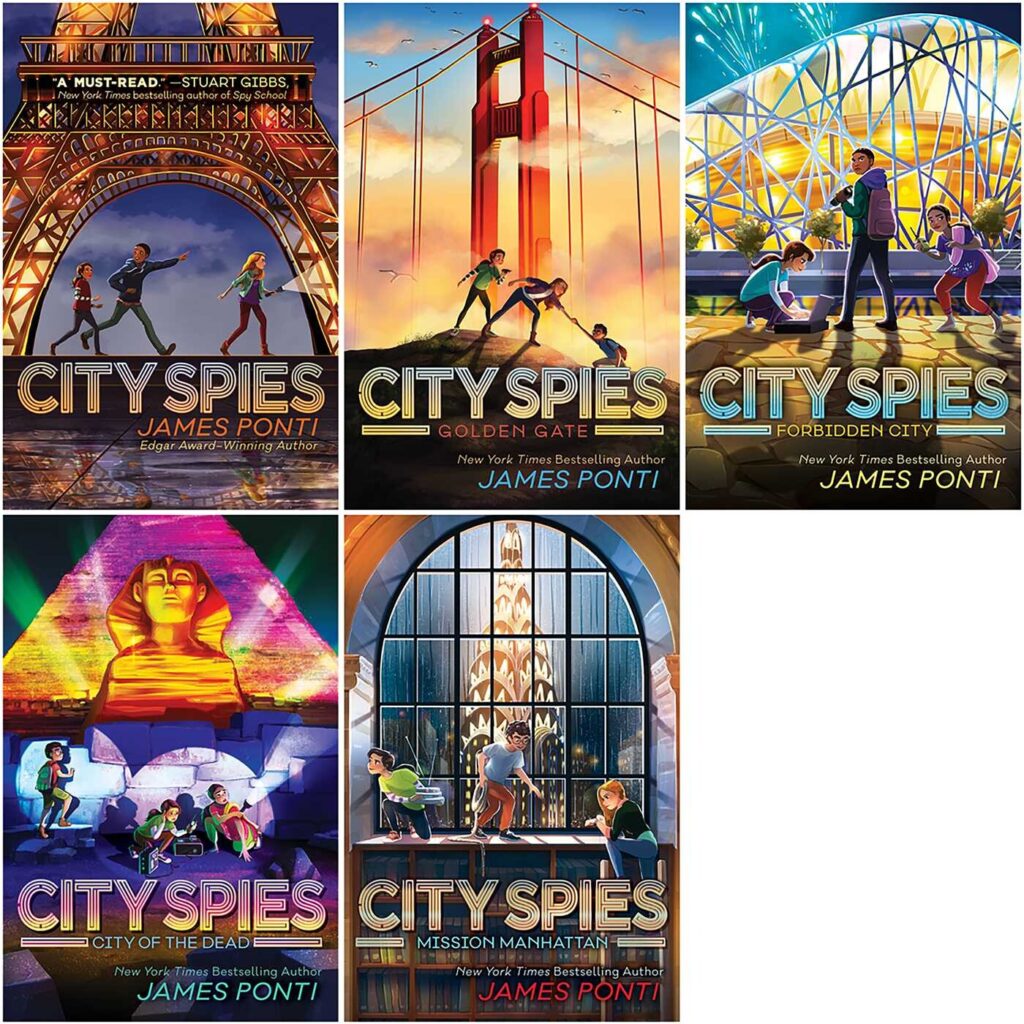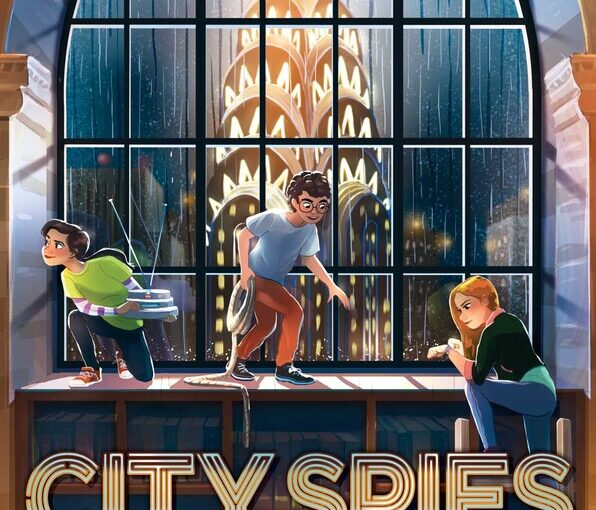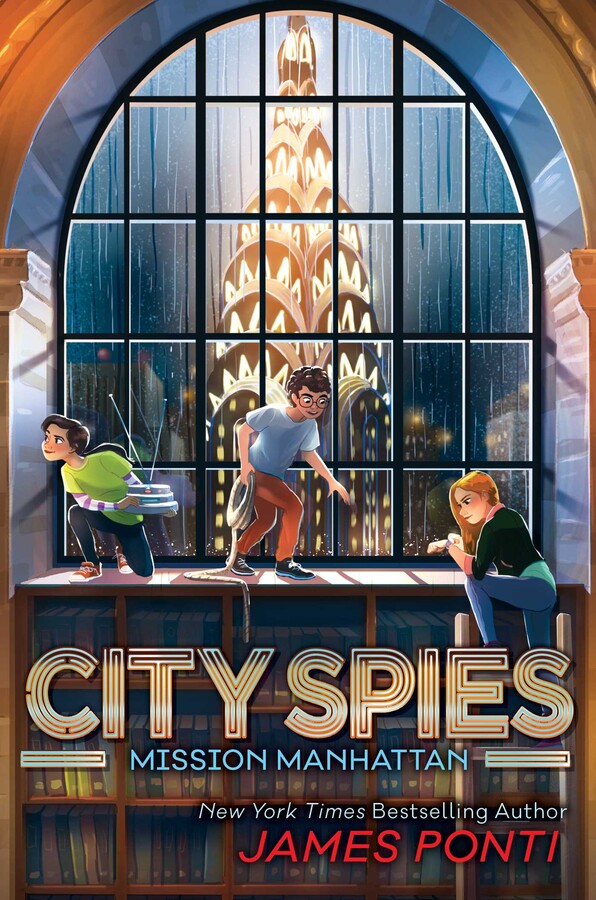The great thing about a franchise is that it’s dependable. City Spies by New York Times Bestselling author James Ponti is one of the go-to mglit book series for upper-elementary through middle school readers who know. The first four books, and about half of Mission Manhattan, read like a screenplay that is primed and ready to become the next movie franchise that you didn’t know you needed. They’re loaded with enough action, teen-centric humor, and intrigue to keep ages 8-12 entertained and invested in the group’s progress. The group goes on supervised missions where adult spies would look too out of place and each spy is named after the mega city from which they’re from, like Rio, London, Cairo, etc. City Spies: Mission Manhattan finds the group of teenage spies-in-training in Italy and New York embroiled in a plot to save a fellow teenager from danger within her camp.
Mission Manhattan starts with the same breakneck speed and pacing that the previous books do. The team is onsite in Venice, Italy where they’re protecting a Bea, a teen who is an eco-activist, speaking to large groups about the importance of the environment. As the team is scouting the area they discover a credible threat of a bomb near Bea’s speech. Rio, one of the City Spies, is quick to determine where the bomb is located, which ingrates himself into Bea’s inner circle.
There’s a fun training sequence at their headquarters that serves as a bridge between the two main action periods. The second half of Mission Manhattan concentrates on Bea’s speech to the United Nations and the fact that she might have a mole within her organization. The City Spies split into two groups so that they can hopefully find the rat, rescue their adult minder, and get Bea to the United Nations for her speech.
For the most part, City Spies: Mission Manhattan sticks to the script and produces a very enjoyable mglit spy caper. However, enjoyable it is, the book is the first one in the series to stumble. Perhaps it’s a sign of a book series going into its fifth book, the byproduct of having more characters in it or a slightly younger tilt in this book’s demographic. It could be all three of them.
The previous books were full-tilt action that breathlessly had readers turning the page once the previous one was consumed. Mission Manhattan has moments like that, but the book is paced into an unequal four acts that needlessly stop the momentum. The first act has the same template as the formula that made the books so entertaining. The second act is the aforementioned training sequence that’s entertaining but does slow the book down a bit.
The third act is very short, it’s only one chapter, but it mostly stops the forward progress of the characters, their action, and the plot. This chapter concentrates on Rio and Mother, one of the adult minders, and is a flashback scene from three years ago when the youth was not yet a spy. It’s not that the series has ever had flashbacks, but if they did, they were shorter, didn’t necessitate a full chapter to do so, or had a less annoying character as their guide. There, I said it, Rio is annoying, he’s an immature pest and our least favorite character in the bunch and Mission Manhattan is his vehicle.

As an older reader, I also found the non-spy character of Bea to be predictable and dated. It’s as if you could time capsule when the book was conceived by following the peak influence of Gretta Thunberg. Middle school audiences, the key audience for Mission Manhattan, are interested in the environment and attracted to eco-activists. It’s a natural fit for Bea to take that form, but the obvious connection between the two, and Thunberg’s virtual departure from the global stage has more of a nostalgic feel than one of pressing importance.
The fourth act finds its footing again and allows the characters, their dialogue, mannerisms and the action to back in the groove. Unfortunately, once the action is resolved, it revisits Rio, and his mother who might be nefariously influencing things from the shadows. The City Spies book series is still very effective and entertaining, and it’s possible for long-running mglit series’ to evolve to be more complex as the characters grow up and new ones are introduced. The Spy School book series is a great example of that, it shows the teenage characters having more age-appropriate issues, all the while maintaining the action and spy hijinks that made them a success.
Most mglit audiences probably won’t find the same faults with City Spies: Mission Manhattan that I did. They’ll still enjoy the book and find it to be a worthwhile entry in a series that they enjoy. However, they won’t enjoy it as much as the previous books and might not be able to put their finger on exactly why don’t. It’s part of a franchise that you like to frequent, but its décor, customer service, or parking lends itself to having fonder memories of the other location.
City Spies: Mission Manhattan is by New York Times Bestselling Author James Ponti and is available on Aladdin, an imprint of Simon & Schuster.
There are affiliate links in this post.






 Facebook
Facebook Twitter
Twitter Flickr
Flickr GooglePlus
GooglePlus Youtube
Youtube